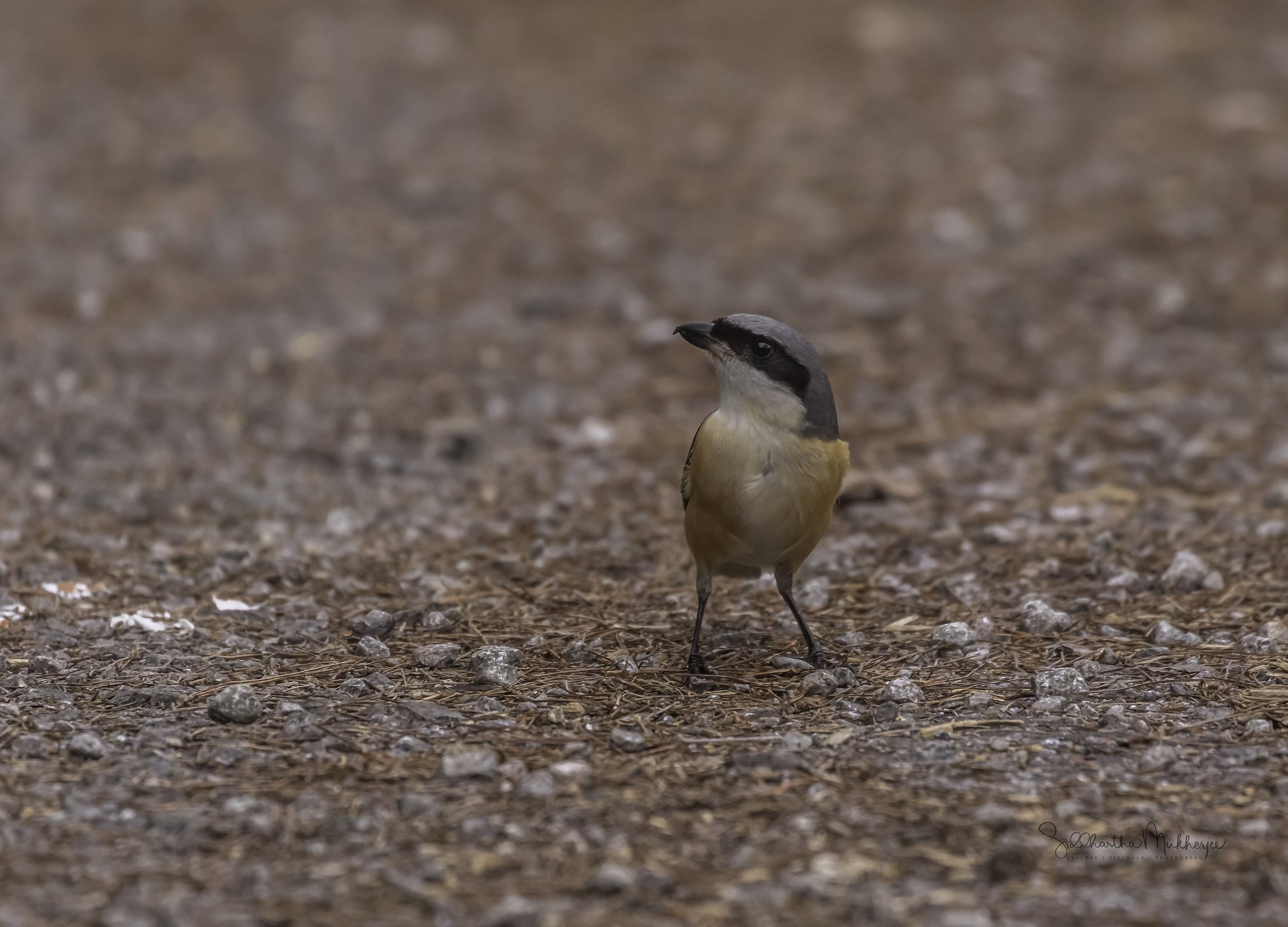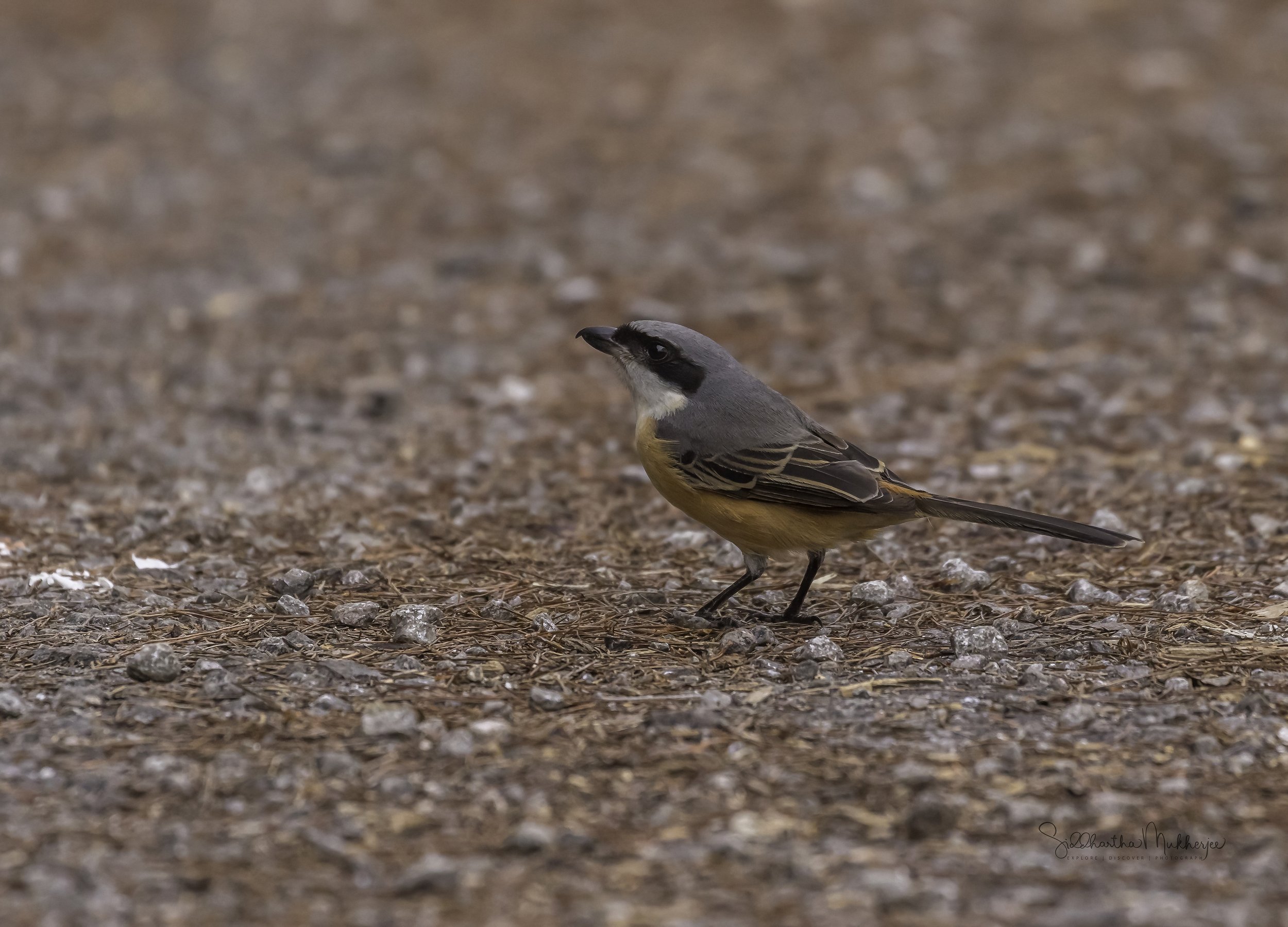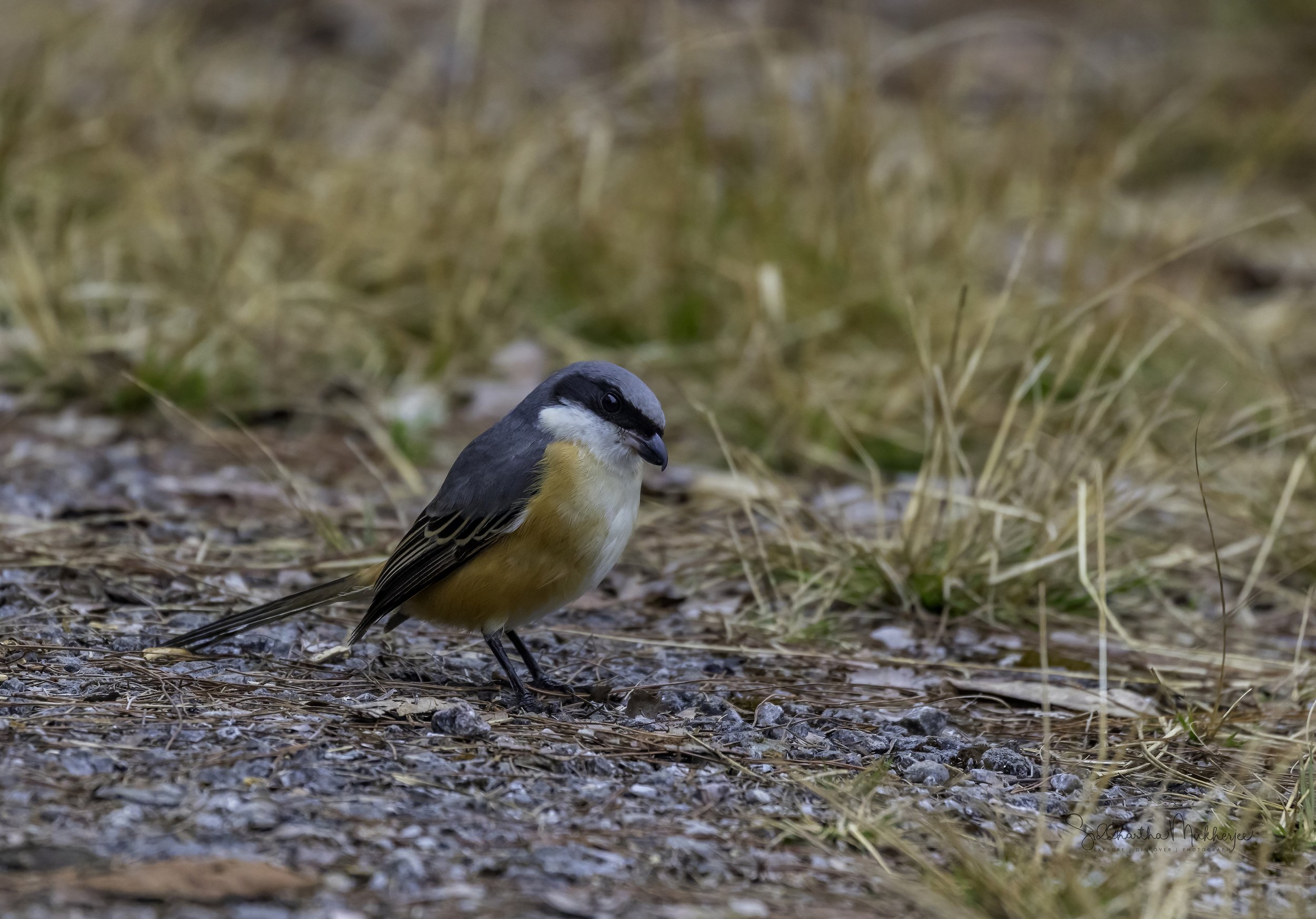Grey-backed Shrike
Lanius tephronotus
Chiang Mai, Thailand
This week I return to the beautiful hills of Chiang Mai to talk about the Grey-backed Shrike. The Dois of northern Thailand have been very kind to me from a birding perspective. There are so many I have already talked about and so many still remaining. But I digress!
To read more about the birds in the Dois of Chiang Mai click here.
About 685 kilometers to the north of Bangkok lies the former seat of the ancient Lanna Kingdom & is considered one of the most scenic provinces in the country given its mountain ranges, valleys, flora and fauna. A land of misty mountains and colourful hill tribes, a playground for seasoned travellers, and a delight for adventurers. Despite its relatively small size and blissful calm, Chiang Mai truly has it all, a city that is still firmly Thai in its atmosphere and attitude. It is the second-largest changwat (province) of Thailand. Bordered by Chiang Rai to the northeast, Lampang and Lamphun to the south, Tak to the southwest, Mae Hong Son to the west and the Shan State of Myanmar to the north. Located in a verdant valley on the banks of the Ping River, Chiang Mai was founded in 1296 as the capital of the ancient Lanna Kingdom. Today it is a place where past and the present seamlessly merge with modern buildings standing side by side with venerable temples. Of all the places I have visited in Thailand, Chiang Mai with its forests and mountains and the historic city of Ayutthaya are by far my favourites.
The word Chiang itself is from North Thai, or Lanna, meaning town or city and Mai means new making Chiang Mai the New City as it was founded later than Chiang Rai, the earlier capital of King Meng Rai. The districts in the province are called amphoe, and sub-districts are called tambon. Another twist is the use of Nakhon (or Nakorn or Nakhorn), derived from the Sanskrit word Nagara, also means city, though strictly speaking it refers to a capital city such as Nakorn Sri Ayutthaya (more on Ayutthaya later). Indeed to emphasise its former status you may sometimes see Chiang Mai referred to as Nakhon Ping. Other common names of geographical features include mae (river) and doi which is north Thai for mountain - for example Doi Inthanon and Mae Ping.
The four Dois we spent our time on were Doi Inthanon, Doi Ang Khang, Doi Luang and Doi SanJu.
Doi Luang & Doi SanJu in close proximity to the Doi Pha Hom Pok National Park, it is the second highest mountain in Thailand and a part of the Dan Lao Mountain range, northwest of Chiang Mai, sharing the border with Myanmar. Doi SanJu, can be easily accessed from Fang town. The mountain forest and no traffic make it easy to view birds. The entire area is very quiet, secluded and home to rare species like Mrs. Humes Pheasant, Long–tailed Sibia, Himalayan Cutia, Black–throated Tit, Black–eared Shrike Babbler, Whiskered Yuhina, Crimson–breasted Woodpecker, Fire–tailed Sunbird to name a few.
We didn’t have the good fortune to see all the species on all the mountains, that would have been impossible, but we did rack up quite a number of species - about 95 of them. The gallery today is of the pretty Grey-backed Shrike.
‡‡‡‡‡
For a print of the beautiful birds from the Dois click on the button below to read my process and order a limited edition canvas.
‡‡‡‡‡
Grey-backed Shrike
First described in 1831 by Nicholas Aylward Vigors after he spotted it near Darjeeling in North India, the Grey-backed Shrike is a species of bird in the Laniidae family. It is found in Bangladesh, Bhutan, Cambodia, China, India, Laos, Myanmar, Nepal, Pakistan, Russia, Thailand, and Vietnam.
It was first described as L. tephronotus & closely allied with L. schach, and formerly treated as conspecific, but differing in morphology; moreover, the two species are largely sympatric and, although race lahulensis sometimes considered to represent a hybrid population between them, there is no definite proof of interbreeding. Two subspecies (L. t. lahulensis and L. t. tephronotus) are recognized.
It is about 21–23 cm long and weighs between 39–54 grams. A rather small shrike with a long tail. The nominate race has black lowermost forehead (just over base of bill) and a facial mask through lores and eye to rear ear-coverts. Their crown to nape and most upper parts are a dark grey with a small rufous rump patch. The upperwing is black, most wing-coverts, secondaries and tertials are fringed pale rufous to whitish, sometimes a tiny white patch at base of primaries (often lacking). The tail is a chestnut-brown, tipped buffish, outermost pair of rectrices light brown; the throat and under parts are white while the breast side and flanks are rufous. The iris is dark brown with a black bill and the legs a dull black. The sexes are very similar. The juvenile is browner above than adult, with a less marked brown (not black) facial mask, horn-coloured lower mandible, has crown finely barred, upperparts and much of the underparts are a heavily barred dark brownish. The race lahulensis is smaller and weaker-billed than the nominate, also much paler, brownish-grey above, with a rufous lower back and rump, white primary patch usually slightly larger and more visible, tail sometimes blackish (not brown).
The grey-backed shrike has two subspecies.
L. t. lahulensis (Koelz, 1950) breeds from north Kashmir east to central India (Uttar Pradesh), and southwest China.
L. t. tephronotus (Vigors, 1831) breeding range extends from Nepal east to northeast India (Arunachal Pradesh), and center and south China (southern Gansu, Ningxia and eastern Shanxi south to southeast Qinghai, south and east Xizang, southeast Yunnan and central Guizhou); non-breeding distribution stretches south to Bangladesh, Myanmar, Thailand and Indochina.
The Grey-backed Shrike breeds at high elevations in forest clearings, plateau plains and mountain meadows dotted with small trees or fairly large bushes; to at least 4500 m in Nepal (becoming common from 2700 m upwards) and in south China (Yunnan). Post-breeding habitat in Sichuan (south China) either young open coniferous stands with forest clearings dominated by bushes, or pastures at higher elevations; at lower altitudes occurs in extensive agricultural valleys near human settlements. On non-breeding grounds in valleys and plains found in variety of habitats, including gardens and abandoned cultivation.
This particular bird was photographed as we waited at the top of Doi Ton Phueng just south of Doi SanJu. We were waiting for the Mountain Bamboo Partridge to reappear.
With that said I think it is time to move onto the gallery of this beautiful shrike.
‡‡‡‡‡
Related Posts
















